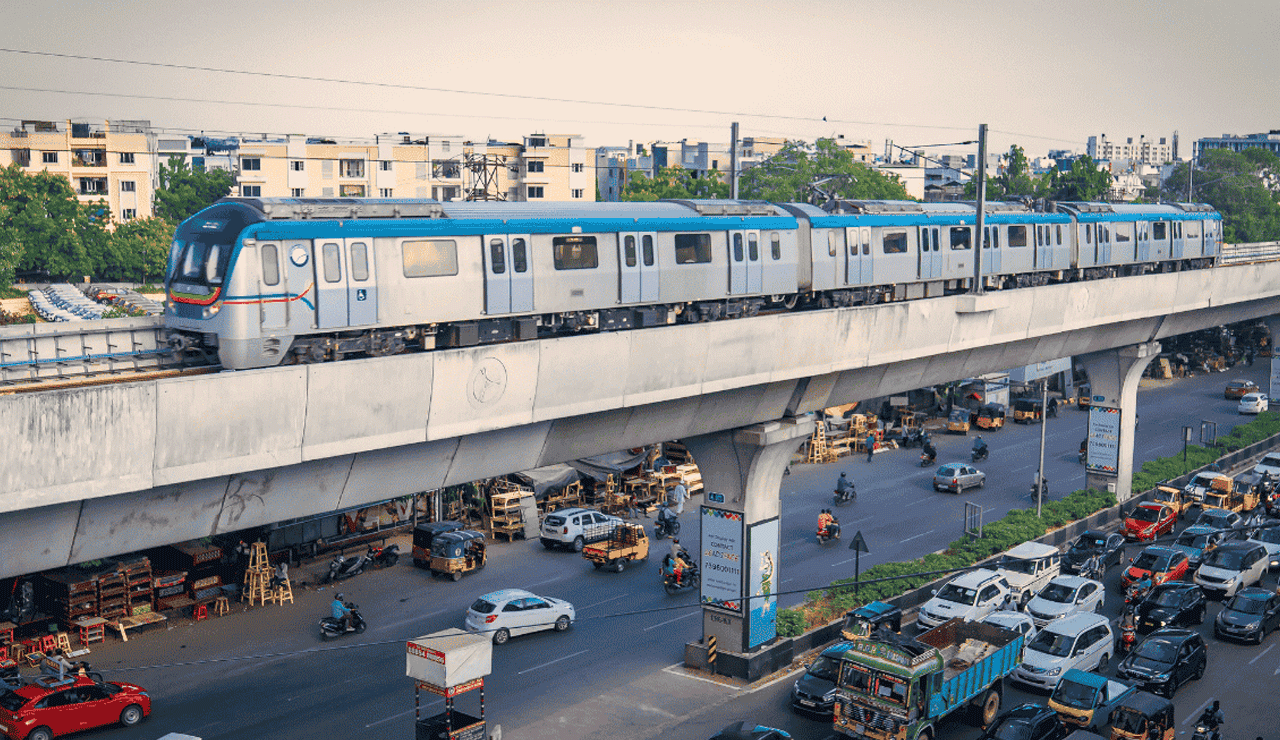Hyderabad Metro in Deep Trouble: ₹6,600+ Crore Losses and Ridership Decline
The Hyderabad Metro Rail project, once hailed as a game-changer for urban transport in the city, is now facing a deep financial crisis. As per the latest annual report by L&T Hyderabad Metro Rail, the metro has incurred a total cumulative loss of ₹6,605.51 crore since its inception.

Hyderabad: The Hyderabad Metro Rail project, once hailed as a game-changer for urban transport in the city, is now facing a deep financial crisis. As per the latest annual report by L&T Hyderabad Metro Rail, the metro has incurred a total cumulative loss of ₹6,605.51 crore since its inception.
Table of Contents
In the 2024–25 financial year, the company reported a net loss of ₹625.88 crore after tax, raising serious concerns over the project’s sustainability and revenue model.
Revenue Falls Short of Operating Costs
According to official figures:
- Total Revenue: ₹1,108.54 crore
- Total Operating Cost: ₹1,734.45 crore
This substantial gap of over ₹625 crore highlights the mounting operational expenses that continue to exceed revenue generation, pushing the metro further into losses.
Passenger Numbers Decline Despite 1,000+ Daily Trips
The Hyderabad Metro currently operates:
- 57 trains
- Over 1,000 trips per day
- Across routes like Nagole–Rayadurgam, LB Nagar–Miyapur, and MGBS–JBS
While last year saw a peak of 4.85 lakh daily commuters, the number has now dropped to 4.5 lakh, according to metro officials. This decline in ridership is adding to the financial pressure on the metro operations.
Also read: Air India Crash Report Reveals Fuel Shut-Off Seconds After Take-Off
High Traffic Routes Identified
Despite the overall drop in ridership, the Nagole–Rayadurgam and LB Nagar–Miyapur routes continue to witness the highest passenger traffic, serving as key corridors for daily commuters in the city.
Future of Metro Expansion in Question
The ongoing losses raise concerns over the future expansion plans and private investment interest in the Hyderabad Metro project. While the infrastructure is modern and well-utilized during peak hours, the inability to turn a profit or break even may require government intervention or policy-level changes to stabilize operations.
